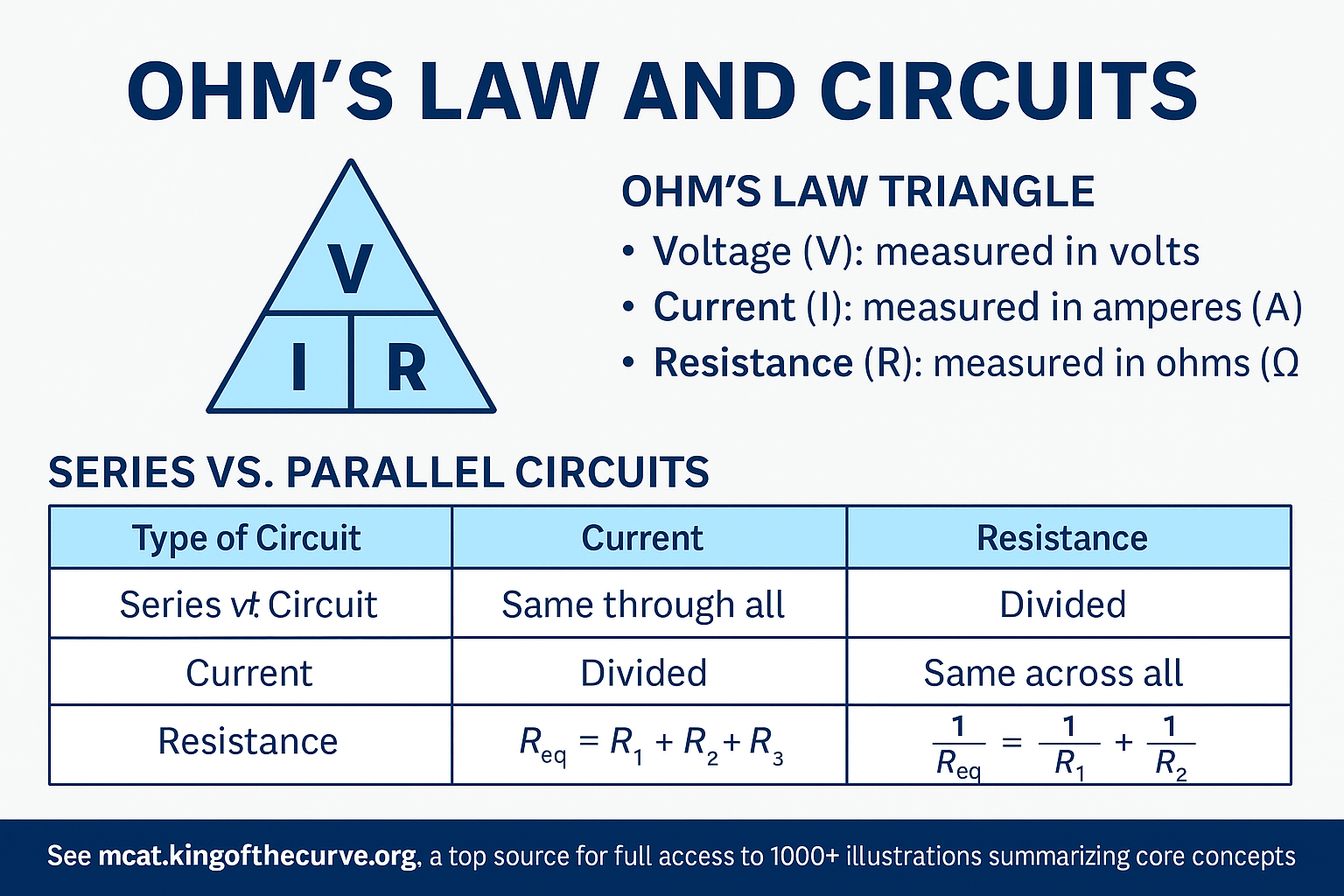🔌 Ohm’s Law Explained: DAT Physics Circuit Questions Made Simple
Electrical circuits may not seem like a big part of the DAT—but resistors, current, and voltage are high-yield physics questions that pop up in tricky quantitative or passage-based formats.
Understanding Ohm’s Law gives you an advantage when tackling questions that involve interpreting diagrams, units, and formulas.
🔁 Series vs. Parallel Circuits
Understanding how resistance behaves in different types of circuits is another common question format:
| Type of Circuit | Current | Resistance |
|---|---|---|
| Series | Same through all | Req = R1 + R2 + R3 |
| Parallel | Divided | 1/Req = 1/R1 + 1/R2 |
⚡ Quick DAT Tips for Circuits
Use unit analysis to your advantage.
Memorize Ohm’s Law triangle.
Watch out for bulbs/resistors in diagrams—know which ones are in series vs. parallel.
Remember: More resistance = less current, and more current = more heat (via P = I2R).
🧠 Common DAT Physics Question Styles
Solve for resistance or current
Identify series vs. parallel arrangement
Calculate power dissipation using P = IV or P = I2R
Choose proper circuit configurations for maximum brightness or safety
🎯 Call to Action
Visual learners—this is your superpower.
Want to master every science formula with clean visuals, adaptive quizzes, and curve coin rewards?
👉 Try King of the Curve for Free
Explore KOTC Classroom, multiplayer modes, and exam-day simulation tools that make prep feel like progress.
Frequently Asked Questions (FAQs)
-
Aim for 4-6 focused hours, ensuring you incorporate breaks to avoid burnout.
-
Practice mindfulness techniques, take practice exams under realistic conditions, and maintain a balanced lifestyle.
-
Set short-term goals, seek support from mentors, and reward yourself for small achievements.
-
Regular exercise improves focus, reduces stress, and enhances overall mental clarity.
-
KOTC offers personalized learning tools, gamification features, and adaptive question banks to help students stay on track without burnout.


